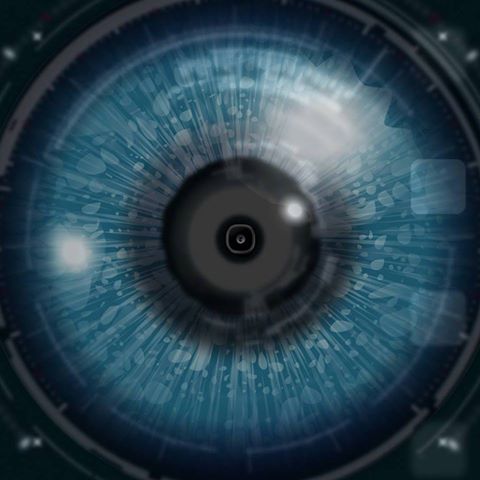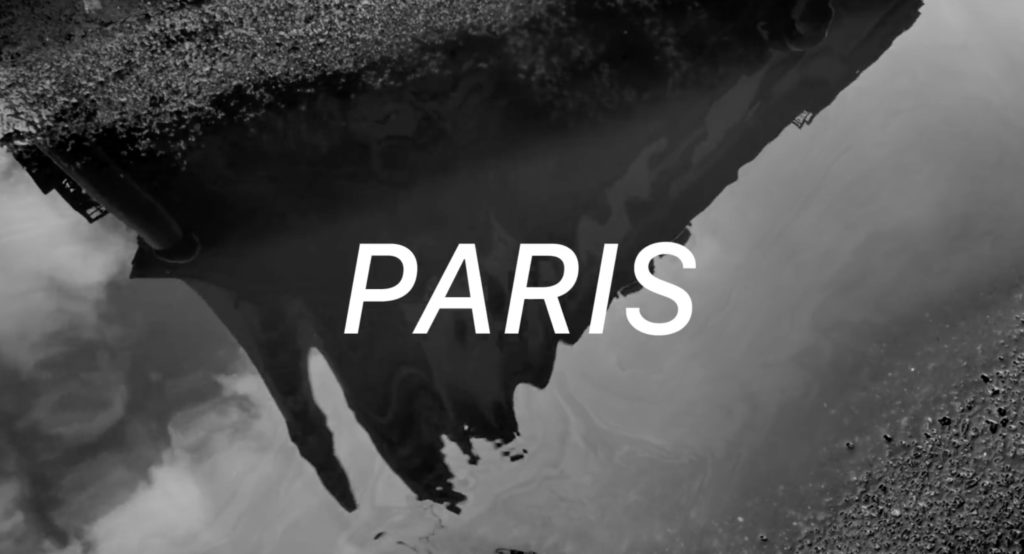Filmmaker Blake Calhoun has made movies using 16mm, Mini DV, DVCPro HD, Canon 7D, Blackmagic Cinema Camera, RED digital cameras, and now iPhones. But whatever the technology, his creative philosophy of DIY Filmmaking remains constant: “Always make sure it does not look like DIY.” A recent example is “Miranda,” a taut 4-minute thriller that demonstrates an amazing variety of filmmaking techniques—such as dramatic close-ups and parallel action presented in split screen—all of it was handled by a two-person crew. In the interview (below) Calhoun gives practical tips that illustrate the potential of the DIY approach.
MMM: What motivated you to become a filmmaker?
Calhoun: Like most people who are in this biz watching movies as a kid inspired me. I always wondered what a “director” was when I saw the credits for films like “Star Wars,” “Raiders of the Lost Ark,” and “Back to the Future.” Although I didn’t start making movies until college, I did play around with video cameras as a kid.
MMM: How did you develop your filmmaking skills?
Calhoun: The main way I learned was OJT (on the job training). I just went out and made movies. That’s always my advice to others too. It’s a cliché but it’s true. It’s the best way to learn.
MMM: Did any filmmakers influence your work?
Calhoun: Mainly indie directors of the 90s: Robert Rodriguez, Kevin Smith, and Steven Soderbergh exemplified the” can do” low budget attitude. Guys Spike Lee and Quentin Tarantino were more about their filmmaking style. I’m also influenced by big Hollywood directors like Martin Scorsese, Steven Spielberg, George Lucas, Ridley Scott, and James Cameron.
MMM: Turning to the present, how did you come up with the idea for “Miranda”?
Calhoun: I had this idea of using vibes from the movies “Hustle & Flow” and “Training Day.” Knowing that Susana Gibb was the lead helped shape the main character. And I thought about the location and props I had access to. I wrote the script in one afternoon. We approached it like a film race. The entire thing was put together and shot in about a week’s time. The shoot was one day (about 7 hours) and then editing was a few weeks long after that.
MMM: Why did you shoot “Miranda” with a phone?
Calhoun: I have used traditional cameras to shoot short films, web series and features. But this time planned to enter it into the FiLMiC Pro One World Film Contest, which required that shooting at least 70% on a mobile phone using their app. We had earlier done another mobile movie—”The Unicorn”— for the Moment Invitational. These festivals—with their deadlines—are good motivations. But the main reason I like experimenting with smartphone filmmaking is the creative freedom it brings. You can do a lot with very little gear and manpower. We made this short film with only a two-person crew.
MMM: Besides the phone, what gear did you use?
Calhoun: We shot on an iPhone 8 Plus and also one scene (the interior) on a Canon C200. For sound we used two RODE wireless mics and a Zoom H4n Pro recorder. We also used an Audio-Technica shotgun mic for booming. We love gear, but in the end their just tools to get the job done.
MMM: What apps did you use?
Calhoun: FiLMiC Pro for shooting and Adobe Premiere Pro for editing, along with After Effects for some FX shots.
MMM: Could you describe your approach to directing?
Calhoun: A director’s most important job is casting. Once you find the right actor you’re 90% there. I’ve worked with Susana Gibb, Steve Elkins and Oliver Tull in the past and was glad they were interested in this project. The next step was having them read the script, make notes and ask me questions. Then we discuss the character and talk about backstory. If we’ve done our homework properly, during the shoot I don’t usually give a lot of direction. I mainly suggest adjustments to a performance or have them do another take faster. I’m surprised how often a faster read can help. On “Miranda” I was also the director of photography (DP), which I don’t always do. I share some of the duties with Cliff Richhart who handled the gimbal and some of the C200 shots.
MMM: How did you develop the soundtrack?
Calhoun Knowing that I wanted a hip-hop kind of sound but without time or budget for an original score, I found several songs using the music site Artlist. I also hit up Damon Criswell, a composer I’ve worked with on several films to see if he had anything I could use. Turns out he did and so a couple of the songs are from him. Music really sets the tone for films and so I always try to work hard on that aspect.
MMM: During the production, did you encounter any big challenges?
Calhoun: We shot this in May in Texas, which is usually not too bad. But this particular day it was almost 100 degrees and the camera overheated several times. I’d had that happen with a Canon 7D and heard of it happening with Sony mirrorless cameras, but previously not with an iPhone. While shooting it felt hot, but I didn’t think it was too hot. I tried to keep the camera in the shade, . But I noticed on several takes the screen would dim. When the video starting to skip frames, I did playback and sure enough it was recording it that way. We had to take the camera into the A/C for about 15 minutes to cool down and then it worked fine. We ended up moving one scene to the shady side of a building instead of shooting at a fence in the sun, improvising on the fly.
MMM: Sounds like a lot happened in one day of shooting.
Calhoun: We tried to capture some of that in the making-of “Miranda” video.
MMM: Did the film come out as you hoped?
Calhoun: Movies never turn out the exact way you envision (at least not mine). There are always compromises or changes that happen, whether that’s with gear issues, location changes, actors getting sick, crew not showing up, audio not recording or of course the dreaded lawn crews and their weed eaters arriving just as you start shooting. It’s always something. But more often than not things work out and many times for the better. Happy accidents can be pretty great.
MMM: Do you have big advice for someone just starting out making movies?
Calhoun: Grab your phone (or whatever camera) and go make a movie or a web series. It’s that simple. No one gets discovered by Hollywood that hasn’t made a movie. Almost every successful filmmaker makes movies on their own at first. Enter your work into festivals, mainly the bigger ones—like Sundance and SXSW— to get noticed. Then put them on Vimeo.com or YouTube.com (which has most of the eyeballs). My biggest successes have come from my YouTube work. My first web series called “Pink” (2007) opened loads of doors for me. It got an agent, a manager, a deal with Warner Bros., and a show called “Exposed” with McG’s company for the TheWB.com (now CW Seed). All of that happened because my producing partner at the time (Mike Maden) and I decided to make “Pink” on our own and upload it to YouTube. I can’t stress that aspect enough. Even in today’s crowded social media space people will find good work.
MMM: Can you give us a hint about your next project?
Calhoun: I’ve got several projects in various stages of development including a prequel to a sci-fi series I directed called “Continuum” (not the SyFy show, but an indie series on Amazon and YouTube). I’ve also toyed with the idea of expanding our short film “Casey’s Favorite Song” into a feature and shooting it on a smartphone. Always keep several things brewing
MMM: What about iPhoneographers?
Calhoun: It’s a YouTube channel we started in 2012 to talk iPhone filmmaking shop. Today it’s not just iPhones though. We cover all things mobile filmmaking including post-production. We just did a video on the new IGTV and shooting vertical video! I can’t say we love that idea, but it’s something folks are talking about, so we try to focus on interesting and current topics along with our own projects including “making of” videos. Our channel currently has just over 20K subscribers, so we’ve got a nice audience and produce at least one new video a week. I invite anyone interested in indie filmmaking (with or without a smartphone phone) to subscribe. People can also follow us on Twitter, Facebook, and Instagram. My personal Twitter page is www.twitter.com/blake_calhoun and my website exhibits lots of my narrative work.
“Miranda” has been chosen as a Mobile Movie of the Week by the editors of MobileMovieMaking.com.



 Previous post
Previous post
 Next post
Next post





